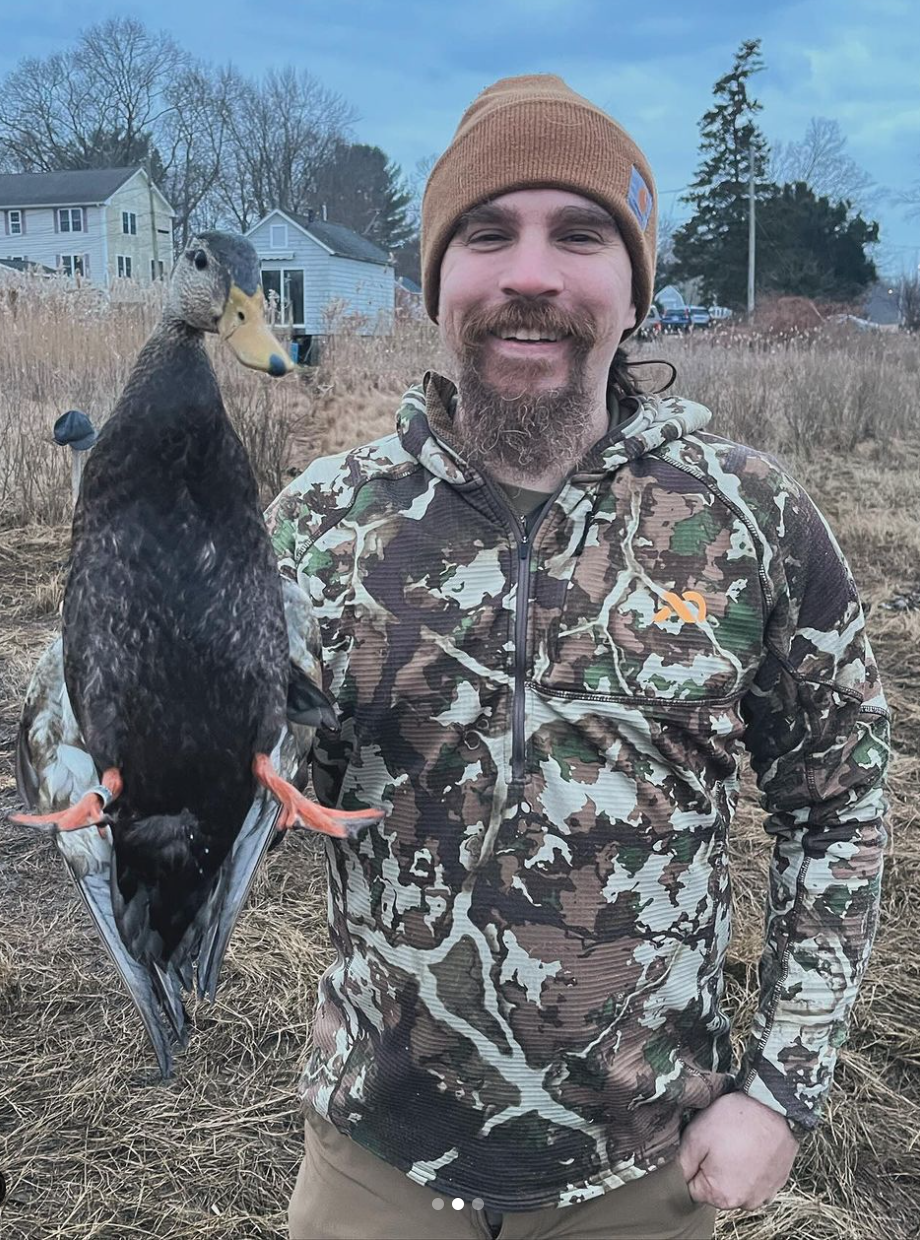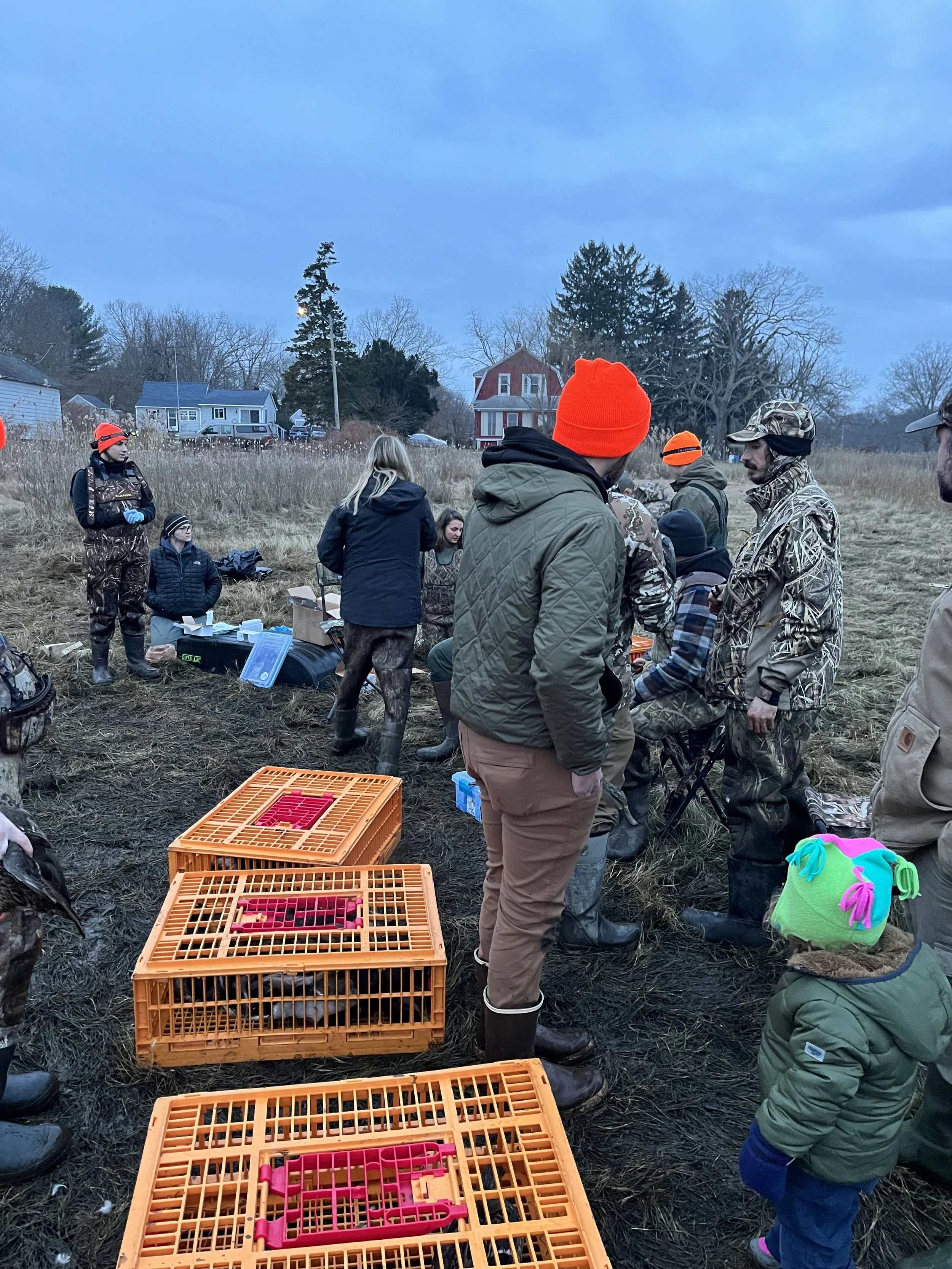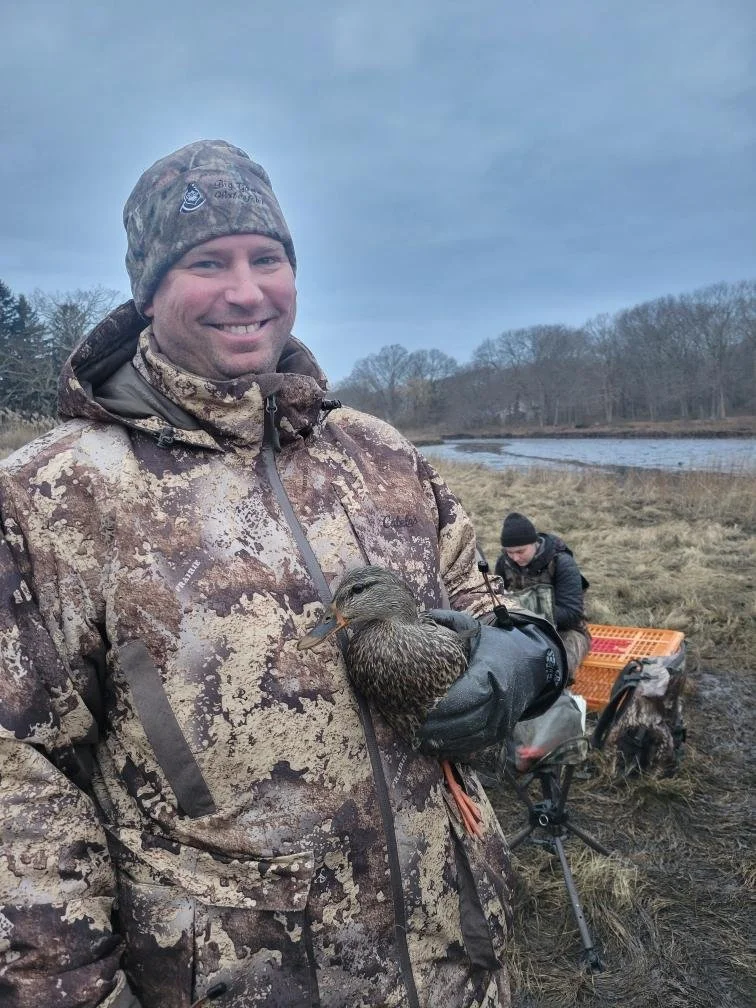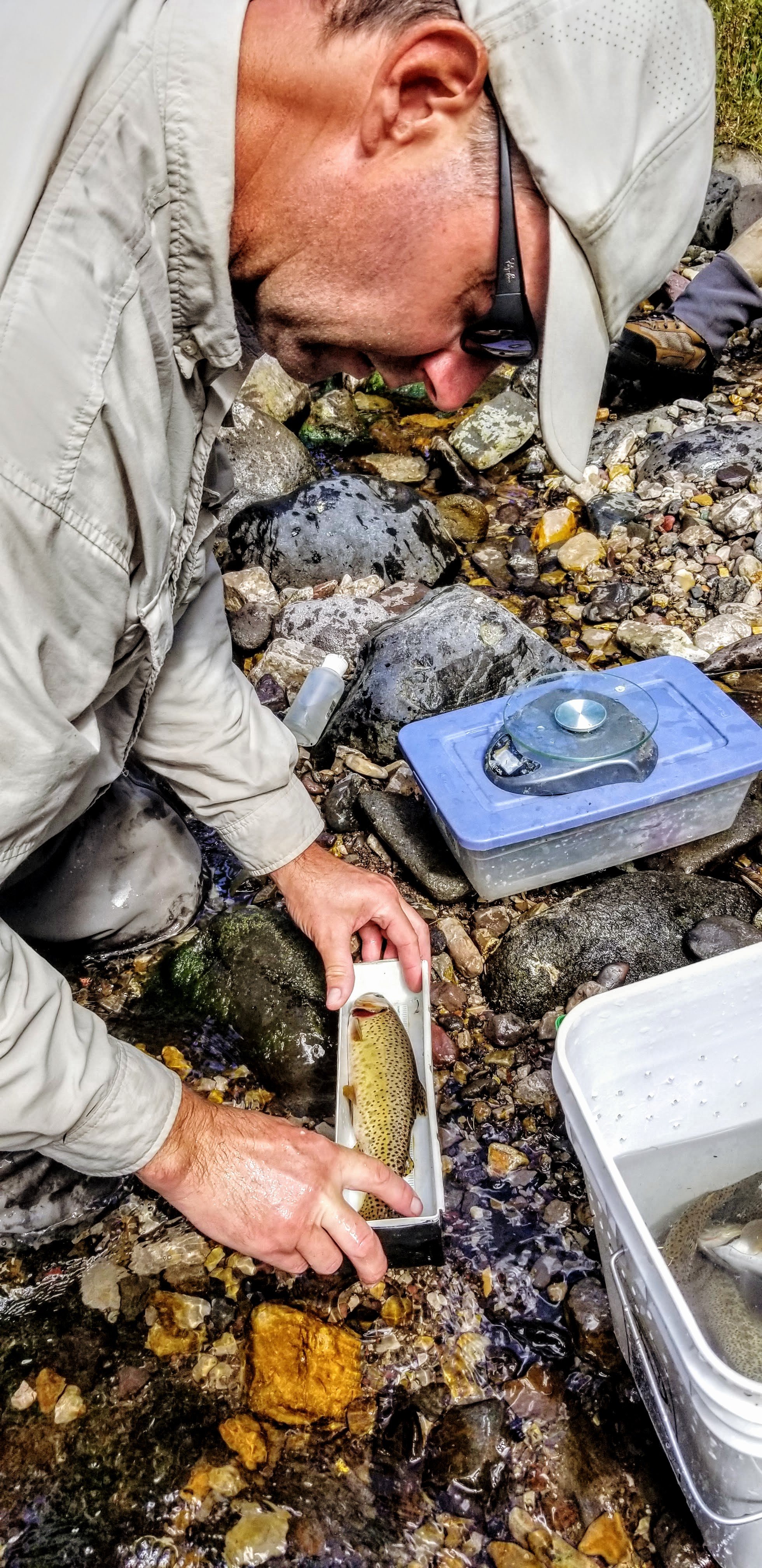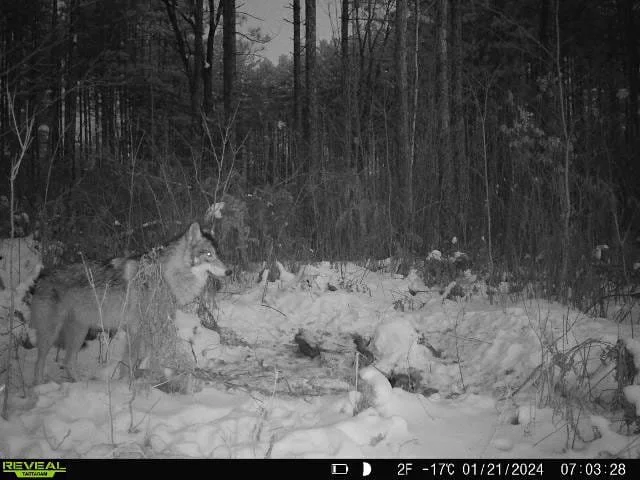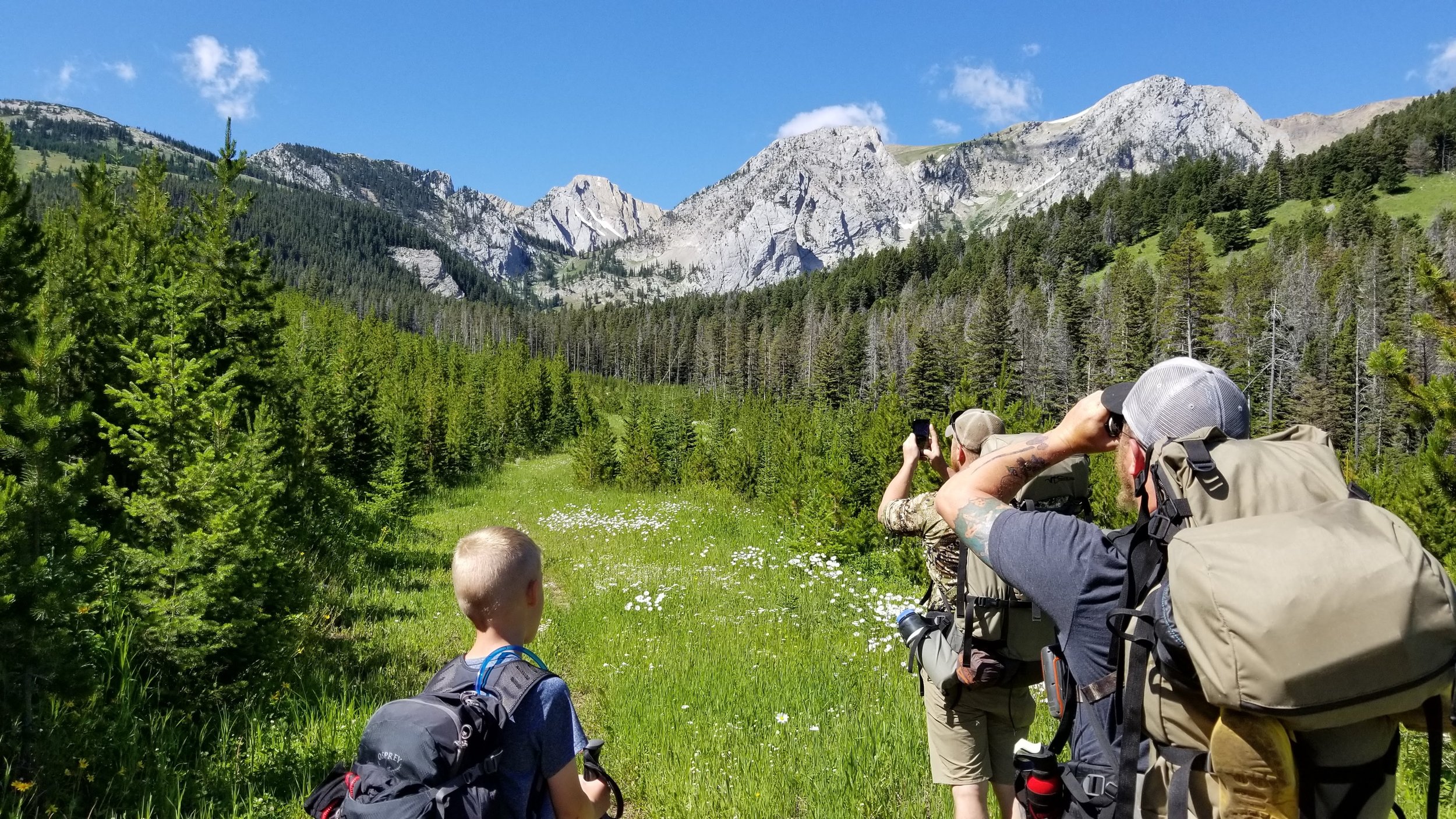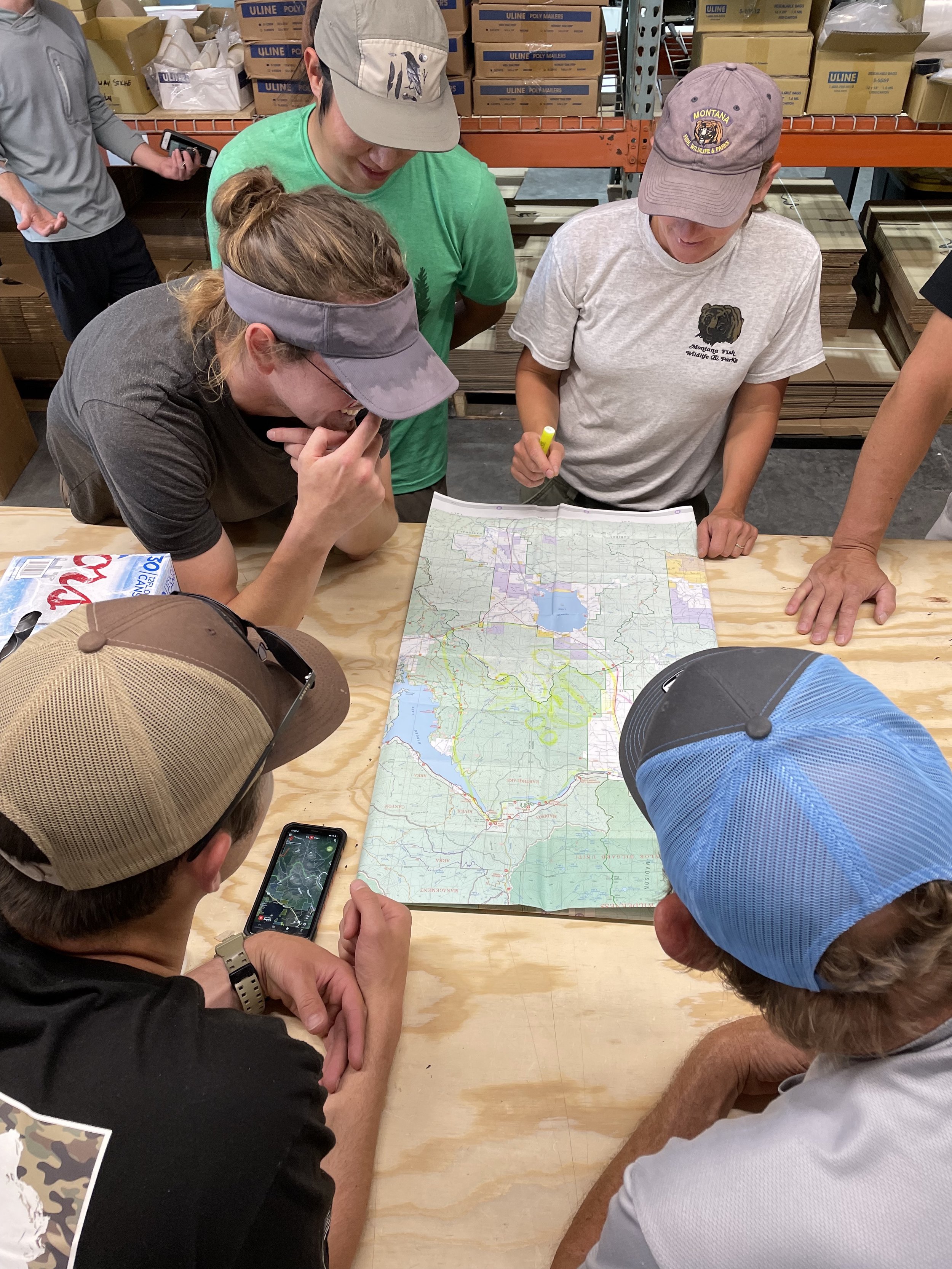How to volunteer your time for wildlife - Part 2/5: Wildlife Counts
By Jared Frasier, Executive Director
Continuing this five-part series of the top ways that our members volunteer time for wildlife, we are going to look at a very popular activity: Wildlife Counts
Of all the ways to volunteer your time for conservation, few get folks more excited than wildlife counts and surveys. They evoke romantic images of becoming a pseudo-biologist in the field, working alongside greats like Goodall and the Crocodile Hunter. Cataloging species with the likes of Muir and Roosevelt. You are a wild scientist, “doing a science”, in a very scientific way. Now, you just need your own PBS special.
And the best part is… it is pretty much like that.
In the first installment of this series, we looked at habitat cleanups. Those are activities that you can volunteer your time for conservation virtually everywhere. That is not always the case with wildlife counts.
But, before we get started, it is important to remember something about wildlife counts. And really, this applies to any volunteering you do in partnership with wildlife professionals.
You will do the most good for wildlife by doing things exactly how wildlife professionals require. The projects typically have to be done very precisely, according to science-based best practices and peer-reviewed methods. The biologists you help need to be able to defend the work done with you. Regulations for access, resource management, and hunting/angling will be impacted by the data collected and how defensible it is. By “defensible,” we mean that they have to prove the work done and the information gathered is at least as good as what they would collect using only trained professionals. If it is not, everyone would be better off if you had not volunteered for the work in the first place.
Wildlife counts are a great time to lead by following.
To simplify the broad (and sometimes daunting) world of wildlife counts, let’s break this into three types:
Seasonal Counts
Continual Counts
Expedition Counts
Which type is available to you depends on the species, ecosystems, and management agencies you are working with. The easiest to get involved with is the first one.
Seasonal Counts
Seasonal wildlife counts are the best starting place for most businesses looking to send employees to volunteer directly with wildlife. And by “directly,” we mean it. Your odds of getting to be in close proximity or direct physical contact with wildlife are on seasonal counts. They typically only take a part of or a whole day.
As the name suggests, these happen on predetermined annual cycles. They are done at specific seasonal times because that is the best time to either collect data or get assets in the field with wildlife to count later.
Some of the most popular examples of seasonal counts that our members volunteer for:
Bird Banding - This is an incredible activity for anyone who loves waterfowl, gamebirds, songbirds, raptors, or just birds in general. You typically get to not only handle wild birds but also help put the “bands” on the birds’ legs. This allows you, biologists, and migration scientists to track these birds over what can end up being thousands of miles.
Typically, birds are banded with a uniquely numbered metal band around their lower leg. These bands do not hurt the birds. Some get tiny transmitters installed to allow for precise tracking. The variations of this practice are as diverse as all the types of birds you could imagine being tracked for conservation purposes.
Because of this, we recommend you look for waterfowl banding projects, first. They are the most common to find and have the longest history of using volunteers. They also happen on a very predictable schedule, tied to waterfowl migrations.
From Jarad Luchka of Rhode Island-based Big Game Waterfowl:
“If you think hunting with your buddies is fun, you should try rocket-netting a flock of ducks for banding. While working with waterfowl biologists, volunteers, students, other hunters, and environmental police officers you learn the real importance of placing bands and radio transmitters on the ducks for the purpose of tracking the population through breeding, nesting, and migration. If it wasn't for the information gathered from this program, the sustainability of such a cool resource would be in jeopardy.”
The above photos are from a recent waterfowl banding day that Luchka and other local conservationists volunteered for.
If you are looking to get a couple team members signed up on a bird banding, the first place to contact is your local wildlife management agency office. Most banding projects happen in partnership with non-profit groups (Audubon, Ducks Unlimited, Delta Waterfowl, etc.), but which group is operating volunteer days varies greatly by region. Contacting your local wildlife agency is the fastest way to find out what opportunities are in your area and when.
Fawn/Calf Surveys - These only happen in the spring/early summer. And they are FUN. They do not always happen in the same place or even every year. Wildlife agencies do not always have the budget to do these boots-on-the-ground counts… and making your team available to do these surveys can be a partial remedy to that issue.
Typically, these ground surveys are done in areas where there is concern over how many females of a species were able to carry their young to term. Many times, it is after a particularly rough winter, the introduction or expansion of predators, a recent explosion of the species in question, or increased human impact on an ungulate population.
If you live in a forest region, these surveys are commonly done by spacing volunteers out in a line and grid-searching for fawns or calves. These are done under strict safety and behavior guidelines for the volunteers. This video from The Rocky Mountain Elk Foundation gives a textbook example of how these counts are done:
If you live in prairie, mountain, or desert regions, these surveys are almost always done from a distance. While forests provide many hiding places for prey species, these other regions often have very limited sanctuary pockets for young to be born into. Binoculars, spotting scopes, and fecal sampling are often the methods used in these expansive regions. These counts can border on the “Expedition” type, which we will get into, further down the page.
In some cases, counting is no longer an option. Populations have dropped to the point that wildlife agencies and their conservation partners have decided that the best odds for the survival of that population is for the young to be born in a controlled environment. This does not always mean captivity and often features some very creative solutions on the part of conservationists. We will cover tips on how to step in and help species when they get to this stage when we get to our series on the Top 5 ways our members support conservation with their donations.
Countin’ Bugs - You can do these almost anywhere during the warmer months of the year.
Why would you count bugs? Because they are vital indicators of the health of your local ecosystem. And they are great options for employees who want to bring their own young children to volunteer with them.
Unlike the two preceding counts, these are typically led by a local university in partnership with land management agencies, instead of wildlife groups or agencies. Insect/pollinator surveys are great starting points for biology students to cut their teeth on the principles of wildlife management and understanding ecosystem health. The invertebrates are often not only counted but also inspected for health markers that can be compared to prior and future counts.
An insect/pollinator survey can happen in many different ways, but some of the most common are:
Aquatic Surveys - Using aquarium nets, some buckets, and a smartphone, you can get a very clear picture of the health of any lake, river, or stream. Invertebrates are the backbone of a strong food aquatic food web. If you want to know what the fish are biting, do these surveys.
Tarping - Grasslands and prairies are often surveyed by dragging a large white tarp or sheet through the vegetation. Insects cling to the “tarp” and are counted and cataloged by researchers and volunteers. Information gathered can help better manage grassland and prairie ecosystems by managing what the insects have to feed on.
Night-Tarping - Instead of dragging a white tarp or sheet, they are hung up like a projector screen with a bright flashlight pointed at it. This attracts nocturnal insect species and allows for more accurate counting than could be done during the day. Just don’t stand too close to the sheet if you are wearing light clothes… you could end up wearing some living “accessories.”
Netting - This is typically done to count larger pollinators, like butterflies and some bee species. If you are imagining running through a field with a butterfly net… you are not far off! But there are rules as to how it is done, both for the efficacy of the count and the health of the pollinator.
Fish Surveys, A.K.A. Fish Shocking - Ok, yes, it sounds bad… hear us out.
The fish kind of like it. If done right, it has been described as kind of a “spa day” for some species of fish.
Essentially, here is how it works:
You need to count all the fish in a section of stream, a small pond, river channel, or a bay of a lake. How do you get to see all of them and how can you do DNA/disease tests? Currently, for most fish species, the best option is shocking.
Fishery technicians, either on foot or in a boat, use a battery-powered and finely tuned “wand” to send a series of low-grade pulses of electricity through a section of water.
The “shock” the fish receive is enough to very briefly stun them, but not enough to hurt or damage them. Then, they are placed into a livewell or resuscitation vessel with a small amount of clove oil in it. Yes, like, oil from the spice “cloves.”
This essentially makes them somewhere between “high” and “drunk.” Whatever the fish version of those two things are. And it does not have a lasting effect beyond a few minutes.
Those few minutes are when the real work starts.
The fish are quickly weighed and measured. A small tissue samples are taken from a fin or other part of their body that does not hurt them and grows back fast. These tissue samples can be used to test for the presence of disease, parasites, as well as DNA and overall health.
Meanwhile, the fish thinks it is at, “like, the best party evaaah!”
It doesn’t take long to see that it is in the best interest of the fish for there to be multiple people, working in unison to get them through the process as fast and carefully as possible.
This is where you come in.
To sign up to help on one of these, contact your local fisheries office. Depending on where you live, it could be your local Department of Natural Resources, your local Fish & Game office, or a marine or waterway management bureau. Ask to be put in touch with the (and this is important) “Fisheries Manager responsible for doing fish counts.” In some places, they have a lot of funding and piles of employees and students to do the work. Other places, like where we are based in Southwest Montana, are wildly understaffed, underfunded, and in need of help just to accomplish their office’s most basic prescribed objectives.
Tell them you are looking to volunteer on a “fish survey.” It has different terms in every state, province, and region of the world, but at minimum, let them know that you would like to be put on a list of volunteers for when they need them. Sometimes, it could be a week of waiting. Sometimes, over a year.
Hack: This goes for all of these seasonal counts. Do not presume that just because you called one month, they will remember you when they are scheduling counts. Again, most agencies are VERY understaffed and underfunded. If you have seen the HBO series “The Wire”, they are like the detectives trying to get clearance and funding just to do their jobs. Call more than once. Be a free solution to an otherwise expensive problem. They are likely not budgeted enough by your lawmakers to do all the wildlife counts they want or need to do. Your consistent calling and offering to volunteer will open the doors to opportunities you might have never imagined to be possible where you live!
Again, these wildlife counts are seasonal. Because of that, you need to contact the appropriate agency or university office at the best time of year to get your team signed up as volunteers for one.
Here is your cheat sheet for when to reach out to agencies about seasonal wildlife counts:
If your winters always get below freezing for more than a week, call your local agencies 3 months before the last frost.
If your winters rarely get below freezing, reach out at least 2 months before you hope to do a volunteer count.
And when in doubt, contact us. We can help you with this!
Continual Counts
It is a rare breed of business certified with us that goes after this kind of wildlife count.
Continual counts mean that you are helping local agencies keep tabs on local wildlife populations year-round. It sounds like a lot of work, and it absolutely can be. But it doesn’t have to be. And businesses make incredible partners for agencies keeping tabs on at-risk species.
These year-round counts typically involve the aid of technology, so it is also an opportunity to support wildlife conservation with your dollars. As a reminder, all brands certified with us are required to donate the equivalent of at least 1% of their gross sales every year.
Our business members are most often involved in year-round monitoring of raptors, upland game birds, turkeys, songbirds, and aquatic species - gamefish and non-game mammals like manatees, seals, dolphins, and whales. It is rare but does happen, that some members are able to help agencies keep track of both game and non-game land animals as well. This typically requires either ownership or year-round access to planes, helicopters, or watercraft to take field biologists out to do counts of specific species.
Trail cameras used by guides, foresters, and ecological engineers can provide valuable location data for biologists conserving species that are challenging to monitor.
In almost all cases, our members who are able to volunteer their time for continual counts are those who operate out and around the wildlife they are helping keep tabs on. Wildlife photographers, guides, arborists, drone surveyors, and ecological engineers spend the majority of the year in or near wildlife habitat. This makes them invaluable assets to even well-funded and adequately staffed wildlife agencies (which are often rarer than the species they are trying to conserve).
As you have probably guessed, it isn’t just consistent proximity to wildlife that makes data from these businesses valuable to agencies — it is how they can leverage their professional tools and knowledge. Arborists can report on changes to flora and fauna. Drone surveyors can get landscape-scale counts in an afternoon while also doing their job of surveying/inspecting remote industrial equipment. Photographers can bring real-world imagery and local counts of populations directly to agencies. Guides spend more time quietly observing and moving through the landscape and waterways than almost anyone else. Guides on waterways can often report nesting sites for shore birds that biologists rarely get to monitor, as well as keeping tabs on invasive flora/fauna. Ecological engineers are working to rehabilitate the land, often in areas more remote than field biologists can afford to spend weeks observing.
If you work in an industry that puts you in fish and wildlife habitat for a decent chunk of time, you could be a greater resource than you realize. We would love to work with you on developing a plan to utilize the time you are already on the clock, but also for wildlife. It is different for every business, every region, and every time of year. But once we can dial in what you can offer, it is just a matter of connecting your profession to the best wildlife professionals to utilize the resource that is you.
This type of volunteering is very unique, but if you think what we are describing fits you and your business, get in touch with us. It is very likely that we can pair your volunteer time and financial giving in a way that is not only helpful for your business but also impactful for your local wildlife.
Expedition Counts
While all wildlife counts are rewarding, beneficial for wildlife, and even help your team’s mental health… “expedition counts” are something special.
For definition’s sake, these are counts that take you into a remote region for at least one overnight. Often, they are in ecosystems with challenging access, extreme weather patterns, and predators higher on the food chain than you.
Before we get into the fun stuff, you need to know what you could be getting into:
They are the most physically demanding, the most resource-intensive, the most logistically challenging, and are often the most dangerous. They will cost you the most money, the most employee time, the most sleepless nights, and can be a massive liability if you do not partner with a group that has significant experience using volunteers for these counts.
When it comes to choosing between employee well-being and the opportunity to do a crazy trip with your team… always choose employee well-being.
Any type of business can do one of these counts. We have members who have sent employees from all kinds of industries to do these.
A few things are non-negotiable for doing this kind of count.
The employees you send must:
Be of good health.
Be competent, beyond a doubt, in the type of ecosystem you are sending them.
Be absolutely trustworthy. This is for the sake of who they are sent with.
Be experienced with the gear needed to traverse and stay in that environment.
Be at least sort of tough. It doesn’t matter how much they squat if they cannot handle unpleasant weather.
Be patient. Of all the challenges, this is the most important for gaining data.
Now that we have effectively covered our rears with that preamble…
Y’all, these might be the coolest thing you may ever do with your employees - and even your families!
This type of count typically lands on a weekend, but some can last a whole week. Odds are, you are looking at the former because you are not asking your employees to volunteer on company time for free. Right?
The most popular types of “expedition counts” that our members participate in are typically in the high alpine, remote desert, or remote waterways.
And despite the challenges we started this section off by listing, these can be fantastic opportunities for kids to be brought along. If, and only if, you have an abundance of experience and preparedness for the ecosystem you will be headed into. But, like we stated way at the beginning of this piece, always do as the wildlife professional requests. If they do not want children participating, do not fight them on it.
Overnight wildlife counts in remote territory often require specialized gear and first-hand knowledge of the ecosystem’s terrain and weather patterns to be both safe and successful. If you have both in spades, and the agency in charge allows it, do not be afraid to add your kids into the mix.
Just last year (2023) we had business members with employees volunteering weekends on remote alpine mountain goat surveys in both blinding sleet and choking forest fire smoke, pronghorn watering hole monitoring deep in arid reaches of the Great Basin, and baitfish schooling observations in remote sun-bleached island chains of the Caribbean. All of them were at least one night in the field and required some level of navigation and outdoor skills beyond the average person.
But the stories those folks got to tell their families around the holiday tables had to be the envy of all their kin.
It is worth repeating: Only do this kind of wildlife count in partnership with an organization with extensive experience using volunteers. Period.
You cannot and should not shoulder the liability of putting together an expedition for your team. At best, your insurance company will hate you. At worst… it gets a lot worse.
There are some incredible organizations to partner with for a wildlife counting “expedition.”
We recommend checking first with the organizations that work specifically to conserve the species you want to volunteer for.
Next, check with organizations that do boots-on-the-ground volunteering in the habitat areas that species live in.
Lastly, try the closest wildlife management office to see if they have opportunities directly with them. That last option is most common for coastal/marine opportunities.
One of the most popular groups our members in North America send their employees with is the Rocky Mountain Goat Alliance. They are so loved by our membership across the continent that our Executive Director joined their board of directors for a few years to help foster deeper partnerships. Their mountain goat surveys are usually 1-2 nights, require at least a few miles of backpacking to reach the survey area, and are a great educational introduction to basic citizen science practices. We have had business members travel across the US and Canada to send their team members on one of their surveys. You can connect with them, here: RMGA
What if I cannot find an organization to partner with, but I know there is a need?
RMGA is a prime example of an organization that was started specifically because there wasn’t an organization to help biologists monitor that species. They were founded by an employee of 2% Certified Stone Glacier, after biologists announced they didn’t have enough data to make informed management decisions for mountain goats in a particular region a few hours from the Stone Glacier shop. He asked the biologist what she needed for data, got some friends and coworkers together, and went out and did it. Now, a decade later, they are the go-to conservation cause for that species.
Hack: If you cannot send your team on an expedition count, you could always host the orientation for one. For the last decade, Stone Glacier has donated employee time and shop space for the volunteer orientations that precede RMGA survey weekends. They open up their building, after hours, and provide food and refreshments for volunteers while the field biologist and organization reps help get volunteers ready for the survey. You could do this for virtually any type of wildlife count, anywhere in the world. Use the resources you have in a way that is impactful for wildlife.
If you let your team follow passion alongside your brand’s core values, holistic partnerships will build themselves.
We have multiple business members who started out with employees passionate about different aspects of conservation and have now launched grant programs, foundations, and independent non-profit groups to tackle those tough conservation challenges.
In the upcoming series on the best ways to give your money to conservation, we will look at some of those examples.
When you can add value and purpose to the employee experience, key metrics rise. Higher employee retention, greater employee satisfaction, and creative solutions to challenges all increase when you empower your team to pursue shared passions.
In the next piece, we will look at some of the easily accessible ways to unify your team, customers, and community through improving wildlife habitat.
As always, if you are ready to take the step towards certification, or would like help in developing a plan for your business to engage in wildlife conservation, reach out. We look forward to hearing from you!


